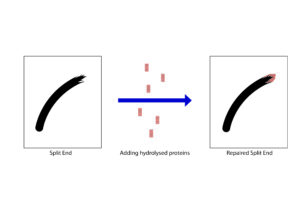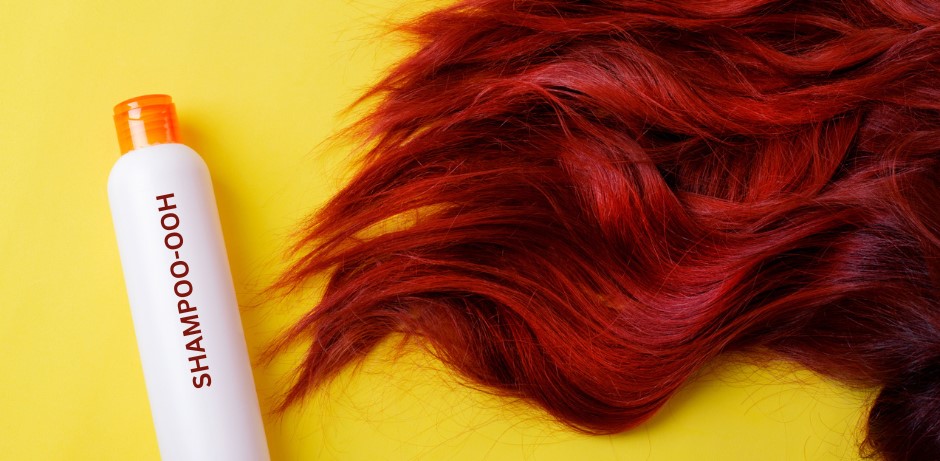Great hair is a real head turner. Healthy hair can make a person look and feel good without make-up, enabling one to stand out in a crowd, or still allow one to express their own style even when our faces are covered with masks.
With UV, heat styling, colouring, perming, straightening and other lifestyle factors damaging our hair on a regular basis, it’s no wonder hair repair products have been trending. So, what are the essential ingredients for hair repair formulas? Read on to find out…
Hair repair formula essential #1: Lightweight oils or silicones
Damaged hair looks coarse, feels dry and has the appearance of ‘fly-aways’ because of damage to the cuticle – the outer cells of the hair shaft. In healthy hair, these cells sit flat, like roof tiles, and have a fine lipid coating to give the hair shine, softness and reduce tangling.
Damaged hair lacks the smooth arrangement of these cells and therefore doesn’t have the same fine layer of natural lipids; so, one of the best ways to fix this issue is to provide a small amount of lightweight oil or silicone. If creating a:
• Shampoo formula: the oil input is best provide as a superfatting agent, so the hair is gently yet effectively cleansed.
• Conditioner or mask formula: the drier and more damaged the hair, the more oil needed! Since you don’t want to weigh down the hair, use 5-7%w/w of a light weight long spreading lipid.
• Hair oil formula: the majority of these formulas should contain volatile lipids, with a small amount of non-volatile lipids for shine and smoothing. The non-volatile lipids are your weightless carriers that will evaporate shortly after applying; while the non-volatile materials will provide the lasting softness and gloss. Watch this video for silicone based hair oils, or this video for a natural hair oil formula.
Hair repair formula essential #2: Hydrolised proteins
Your hair is composed of proteins, so if you want to prepare it, it makes sense you need the building blocks of proteins! Hydrolysed proteins are water soluble combinations of amino acids and peptides from an original protein source. When added to a hair care formula, they act to fill the gaps of damage and provide the strength missing from lifted and lost cuticle cells.

There are many different hydrolysed proteins to choose from plant and animal sources, in varying molecular weights. If creating a:
• Shampoo formula: choose a hydrolysed protein with efficacy data to show its performance in a wash off product. These should be relatively low molecular weight so they don’t leave the hair feeling heavy after cleansing.
• Conditioner or mask formula: choose a hydrolysed protein with data to show its substantivity. A high molecular weight material in hair repair conditioners and masks provides stronger repair and protection benefits.
• Hair repair serum: hydrolysed proteins are perfect in leave on hair serums for the ultimate in hair repair. Since they are water soluble, there would be very few hydrolysed protein preparations to suit hair oils – hence a split end serum is an ideal way to provide lasting repair. Hair repair creams can also be a great way to deliver hydrolysed proteins without
weighing the hair down.
Hair repair formula essential #3: Cationic agent
The hair is normally in a negatively charged state, so when we add positively charged substances (a cationic or quaternary material) to a haircare formula, they not only bind strongly to the hair, but also provide desirable ‘slip’ and detangling.
When choosing your cationic agent, remember:
• Cationic surfactants are incompatible with anionic surfactants – they will form insoluble complexes in a cosmetic formula.
• There are strict input limits over the use of some cationic surfactants such as cetrimonium chloride and behentrimonium chloride – while they are effective conditioning agents, they can also be very irritating so check your local country regulations for limits on use.
• Cationic polymers, such as cationic gums (e.g. guar hydroxypropyltrimonium chloride) and polyquaternium agents are compatible with anionic surfactants.
• Cationic polymers do not have nearly the same charge or smoothing properties that a cationic surfactant does, but are more compatible and often less irritating.
If you are creating a:
• Shampoo formula: use cationic gums and polyquaternium agents only. You would normally only add one or the other for budget reasons.
• Conditioner formula: conditioner formulas contain a cationic surfactant for that beautiful slippery feeling and detangling. Cationic gums or polyquaterniums can add to this cationic benefit whilst managing potential irritancy if the budget allows.
• Mask formula: should include a cationic surfactant at a high level (remember to check regulations for limits), and at least a cationic gum or polyquaternium or both for maximum smoothing and conditioning benefits. You’d also have light weight oils and hydrolysed proteins for maximum results, watch how to make a hair mask formula.
You may also want to add other actives, extracts and humectants to support these essential hair repair formula ingredients. Speak with your suppliers or visit them at your nearest in-cosmetics exhibition and get creating great hair repair formulas today!
Happy formulating!
Enjoyed this article? Get more by subscribing to our newsletter!
Feeling inspired to see ingredients and trends in action?
Then why not visit one of the in-cosmetics events around the world?

